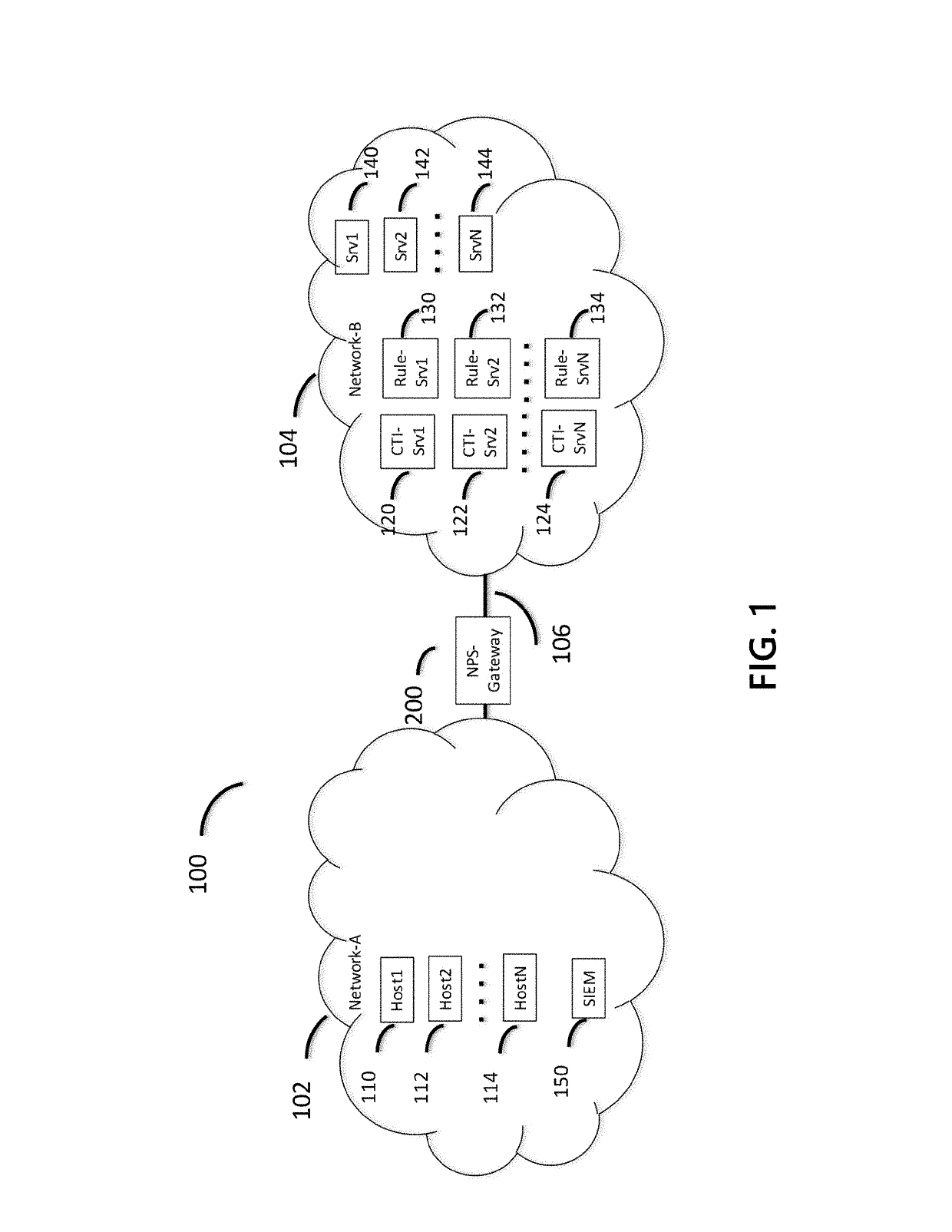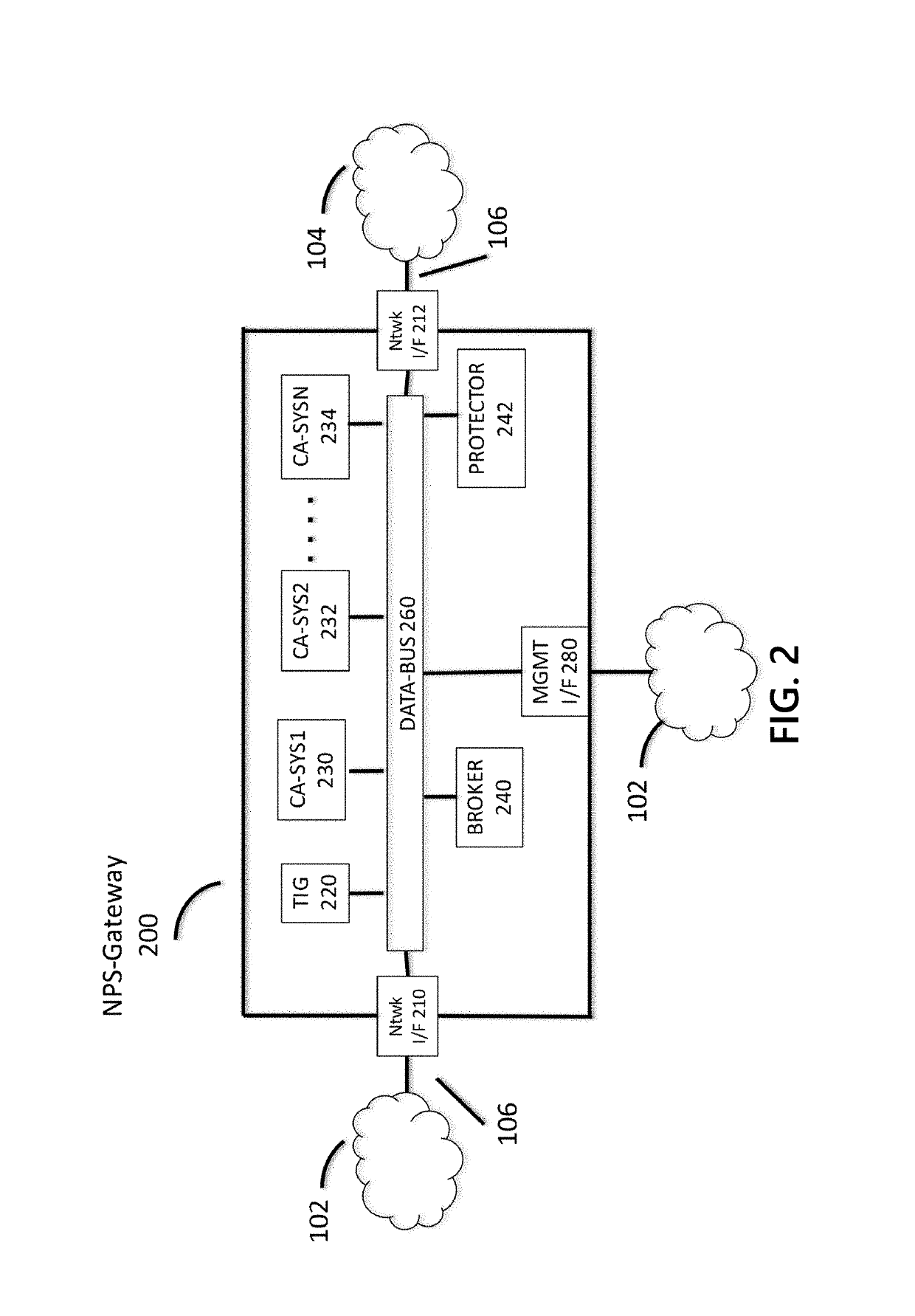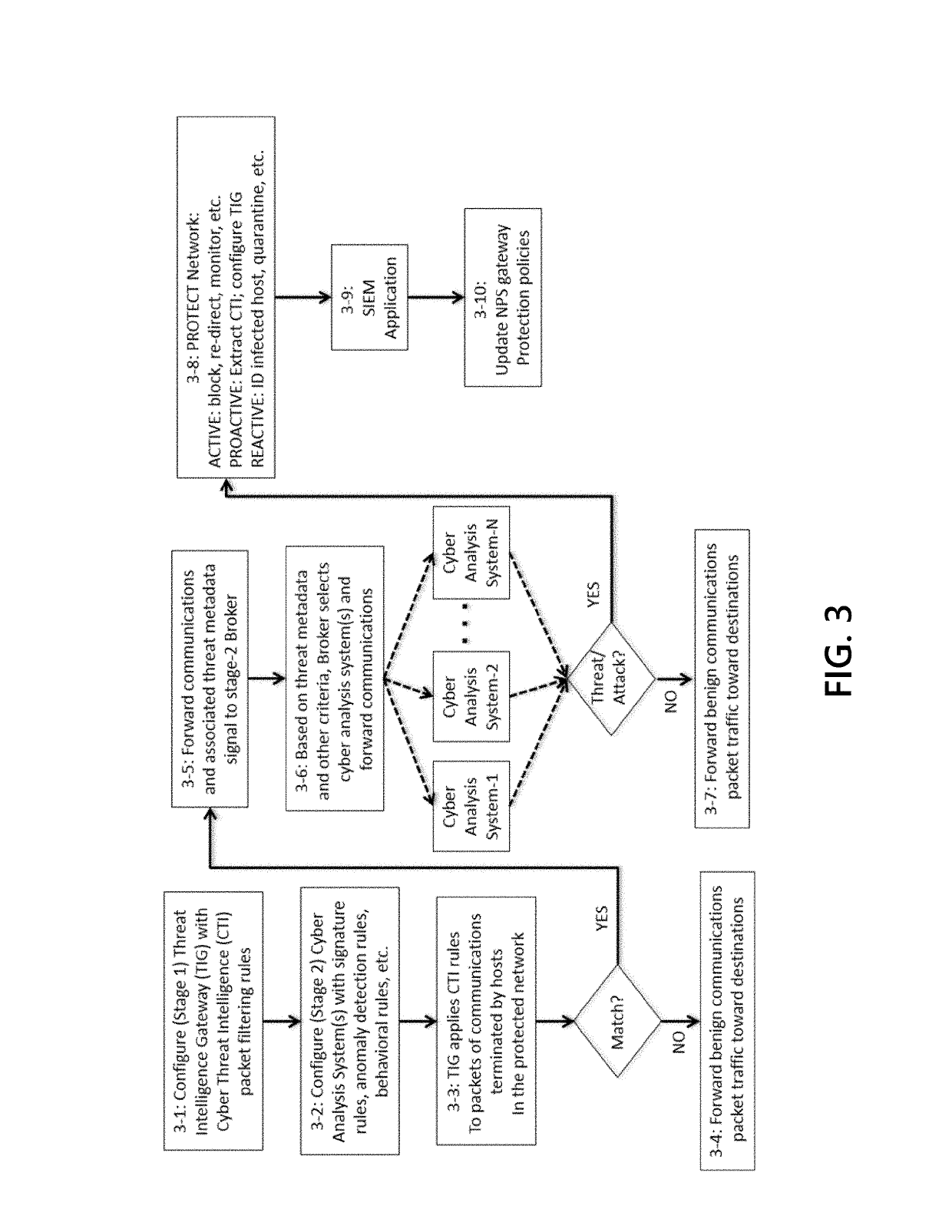Methods and systems for efficient network protection
a network protection and network protection technology, applied in the field of efficient network protection, can solve the problems of ineffective and proactive protection of enterprise networks, inefficient and slow cyber analysis systems, and high inefficiency, and achieve the effects of improving performance, increasing fidelity, and high efficiency
- Summary
- Abstract
- Description
- Claims
- Application Information
AI Technical Summary
Benefits of technology
Problems solved by technology
Method used
Image
Examples
Embodiment Construction
[0036]In the following description of various illustrative embodiments, reference is made to the accompanying drawings, which form a part hereof, and in which is shown, by way of illustration, various embodiments in which aspects of the disclosure may be practiced. It is to be understood that other embodiments may be utilized, and structural and functional modifications may be made, without departing from the scope of the disclosure. In addition, reference is made to particular applications, protocols, and embodiments in which aspects of the disclosure may be practiced. It is to be understood that other applications, protocols, and embodiments may be utilized, and structural and functional modifications may be made, without departing from the scope of the disclosure.
[0037]Various connections between elements are discussed in the following description. These connections are general and, unless specified otherwise, may be direct or indirect, wired or wireless, physical or logical (vir...
PUM
 Login to View More
Login to View More Abstract
Description
Claims
Application Information
 Login to View More
Login to View More - R&D
- Intellectual Property
- Life Sciences
- Materials
- Tech Scout
- Unparalleled Data Quality
- Higher Quality Content
- 60% Fewer Hallucinations
Browse by: Latest US Patents, China's latest patents, Technical Efficacy Thesaurus, Application Domain, Technology Topic, Popular Technical Reports.
© 2025 PatSnap. All rights reserved.Legal|Privacy policy|Modern Slavery Act Transparency Statement|Sitemap|About US| Contact US: help@patsnap.com



